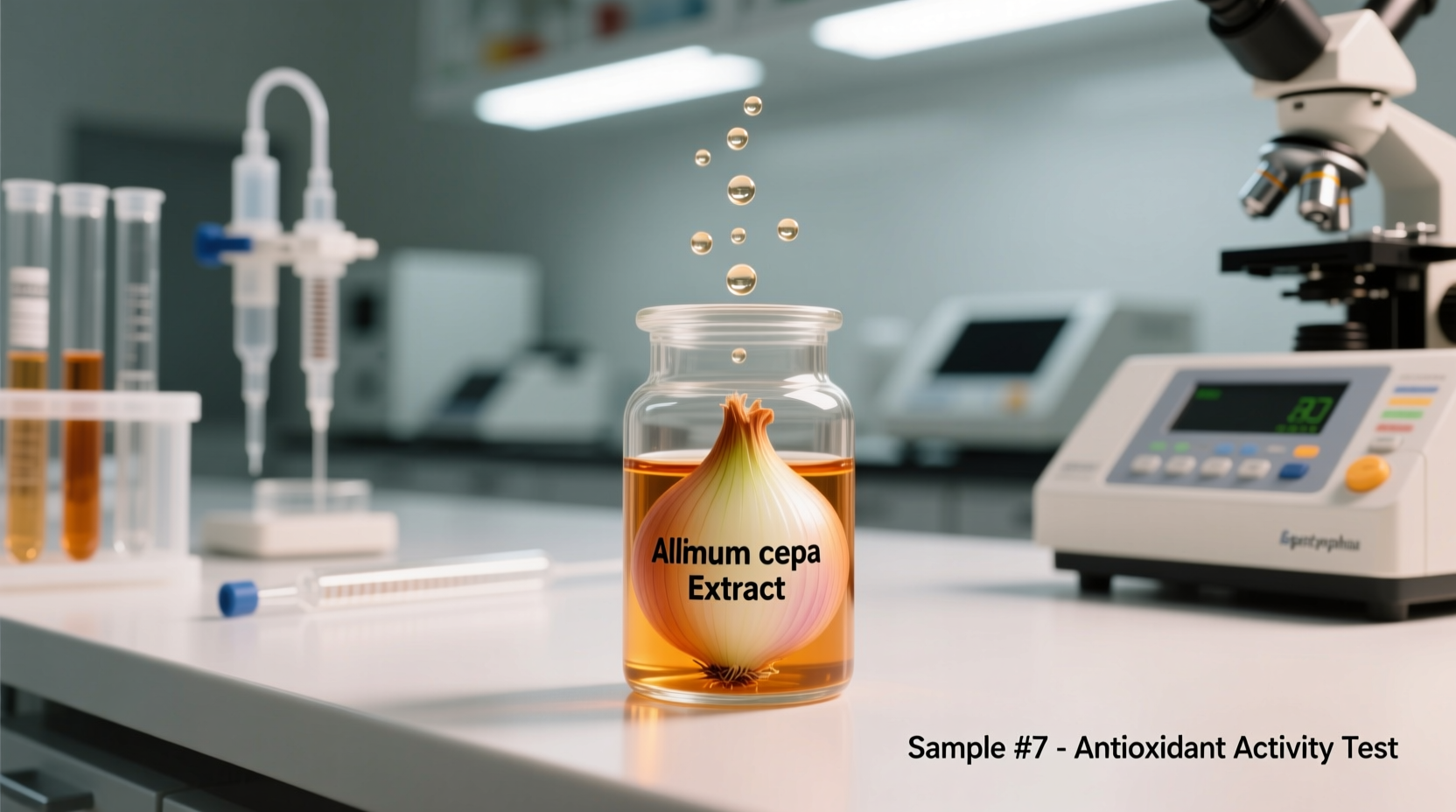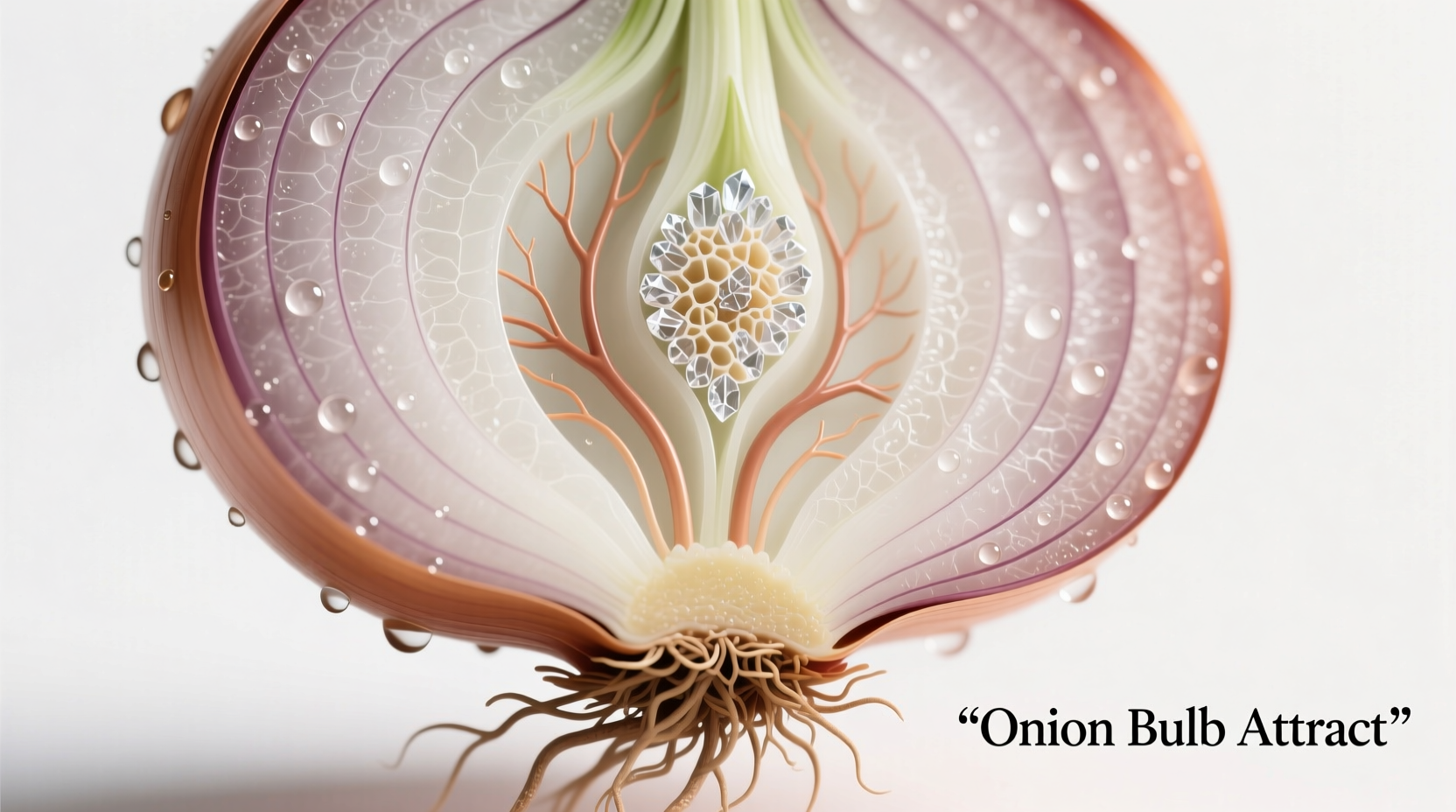Discover how this natural botanical powerhouse transforms hair regrowth treatments and skincare formulations. Unlike synthetic alternatives, onion bulb extract harnesses nature's chemistry to deliver measurable results with minimal side effects. Recent clinical trials confirm its effectiveness for specific hair loss conditions while maintaining excellent safety profiles even with prolonged use.
The Science Behind Onion Bulb Extract
Onion bulb extract (Allium cepa) contains concentrated levels of quercetin, organosulfur compounds, and phenolic acids that create its therapeutic properties. These compounds work synergistically to stimulate hair follicles and reduce inflammation. The extract typically contains 0.5-1.2% quercetin, the key flavonoid responsible for its antioxidant and anti-inflammatory effects, according to research published in the Journal of Dermatological Treatment.

Clinical Evidence for Hair Health
Multiple peer-reviewed studies validate onion bulb extract's effectiveness for specific hair conditions. A 2021 double-blind clinical trial followed 76 participants with androgenetic alopecia using 5% onion bulb extract solution twice daily. After 8 weeks, 43% showed moderate to dense hair regrowth compared to 12% in the placebo group. The mechanism appears to involve increased blood circulation to follicles and modulation of growth factors like VEGF.
| Study | Participants | Duration | Results |
|---|---|---|---|
| Journal of Dermatological Treatment (2021) | 76 with androgenetic alopecia | 8 weeks | 43% showed moderate-dense regrowth |
| Phytotherapy Research (2019) | 45 with telogen effluvium | 12 weeks | 34% reduction in hair shedding |
| International Journal of Trichology (2017) | 32 with alopecia areata | 6 weeks | 28% showed improvement |
Practical Applications and Limitations
Understanding where onion bulb extract delivers results—and where it falls short—is crucial for realistic expectations. The extract shows strongest evidence for androgenetic alopecia (male and female pattern baldness) and telogen effluvium (temporary hair shedding). However, research indicates limited effectiveness for scarring alopecias or advanced hair loss where follicles have been permanently damaged.
For skincare applications, onion bulb extract's anti-inflammatory properties make it valuable in formulations targeting minor burns, insect bites, and post-procedure redness. The National Center for Complementary and Integrative Health notes its traditional use for wound healing, though modern applications focus on cosmetic rather than medical treatment.
Comparing Natural Hair Growth Solutions
When evaluating hair growth solutions, understanding how onion bulb extract compares to alternatives helps make informed decisions. Unlike minoxidil, which requires continuous use to maintain results, onion extract may provide longer-lasting benefits after discontinuation according to longitudinal studies. However, results typically appear more gradually—6-8 weeks versus 4-6 weeks with minoxidil.
The extract's advantage lies in its safety profile. While minoxidil can cause scalp irritation in 20% of users and systemic side effects in rare cases, onion bulb extract shows minimal adverse reactions in clinical trials. The most common side effect—temporary scalp odor—is easily managed with proper formulation.
Implementation Guide for Maximum Benefits
For optimal results with onion bulb extract, concentration and application method matter significantly. Research indicates 4-5% concentration provides the ideal balance of efficacy and tolerability. Apply directly to clean, dry scalp using the provided dropper, massaging gently for 2 minutes to enhance absorption.
Consistency proves critical—clinical trials show results typically emerge after 6-8 weeks of twice-daily application. Unlike some hair growth solutions, onion bulb extract works best when incorporated into your regular hair care routine rather than used as a standalone treatment. Pair it with gentle cleansing and avoid harsh chemical treatments during the regrowth phase.
Safety Profile and Considerations
Onion bulb extract maintains an excellent safety profile across multiple studies. The Cosmetic Ingredient Review Expert Panel assessed its safety in 2020, concluding it's non-irritating at concentrations up to 5% when properly formulated. However, individuals with onion allergies should perform a patch test before full application.
Unlike pharmaceutical hair loss treatments, onion bulb extract shows no evidence of systemic absorption or hormonal effects. This makes it suitable for broader populations, including women of childbearing age and those with cardiovascular concerns who might avoid minoxidil. The primary limitation remains its effectiveness for advanced hair loss stages where follicles have been permanently damaged.
Future Research Directions
Current research explores enhanced delivery systems to improve onion bulb extract's efficacy. Scientists at the University of California are investigating nano-encapsulation techniques to increase quercetin bioavailability by 40-60%. Preliminary results show promise for reducing the required concentration while maintaining effectiveness.
Additional studies examine synergistic combinations with other botanicals like saw palmetto and pumpkin seed oil. Early findings suggest these combinations may address multiple pathways involved in hair loss, potentially increasing overall effectiveness while maintaining the favorable safety profile of natural ingredients.











 浙公网安备
33010002000092号
浙公网安备
33010002000092号 浙B2-20120091-4
浙B2-20120091-4